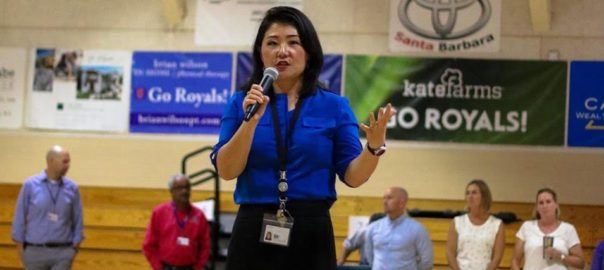
by Kip Glazer
This is the second of four posts from a practitioner’s perspective that were inspired by the theme of the CIRCLS’21 convening of remaking “broadening.” Educator CIRCLS aims to bridge research with classroom practice and broaden the community of people involved in CIRCLS. Learn more about the upcoming convening and register (starting August 13, 2021).
In my previous post, I gave a background on some experiences I have had as a practitioner. I also began to share some differences I see between researchers and practitioners. I called upon my educator colleagues to recognize the fact that we are professionals who have expertise to contribute to the field of education. I start this post with questions that educators constantly ask ourselves as we look at any materials or tools. Educators are constantly thinking about how curriculum, materials, and technologies will work with our students. Many practitioners are very good representatives of different communities because we care deeply about the success of our students. (Of course, we do hope you’ll also talk to students, but if you can’t, we are often excellent advocates and understand them well.) Here are a few questions:
- How would this look in my classroom with my students?
- What would this do for my students?
- How would this be beneficial for my community that I serve, value, and love?
- What resources will I need to be able to fully implement this?
- How would I know this is actually working for my students?
- Based on the profile of my students and community, what modifications and alterations could/should I make?
- If any modification or alteration happens, what am I giving up? What will I gain? How will that impact the effectiveness?
Because these are the questions we educators constantly ask as we look at any materials or tools that we are thinking about using with our students, we are good at answering these questions to devise solutions every single day for our students. When a researcher is developing something for a classroom, they too should be able to answer these questions, but they can’t because they don’t know our students. In addition, there are more questions that practitioners would ask depending on the situation. For instance, they might ask how a tool can serve students with disabilities or how long it will take someone to become proficient at using that tool.
Let me be clear. I am not arguing that a researcher must have answers to the above questions. I am saying they should have educators actively participating in the process every step of the way as they develop future technologies for teaching and learning because ultimately we educators are the interpreters, translators, and the ones who have to implement the 30,000-foot level theories. Discussing these questions could be a starting point to create better partnerships with practitioners who can make research come to life in a meaningful way.
The theme of this conference is to remake “broadening” in research on emerging technologies for teaching and learning. It is no surprise that the word broadening is in quotes given what has happened in recent years regarding critical issues around gender and racial divisions in this country. As an Asian-American female immigrant who has had a few personal and professional experiences on this, few extremely painful, I would whole-heartedly support our collective effort on addressing such issues whenever possible in all situations. However, I would caution that we don’t use the term “broadening” to imply that the field is occupied by one group that needs to allow the others to join in because our teaching and learning community already belongs to all of us!
Having said that, I am thrilled to see the preceding verb remake. Because the time to look at teaching and learning beyond the narrow perspective of division such as researcher versus practitioner is now. I challenge all of us to think about what it means to remake such a notion as we convene. After all, if a bird sings in the forest, and no one is there to hear it, did it really sing? If a great piece of technology is developed, but no one receives any benefit from it because the user experience was so horrible, did it really work? If an amazing research finding on teaching and learning never sees the light of day because it failed to fit practitioners’ needs or work in classrooms broadly, did the research really matter?
If you are interested in joining, please fill out this form.
How to cite this work
CIRCL Educator posts are licensed under a Creative Commons Attribution 4.0 International License. If you use content from this site, please cite the post and consider adding: "Used under a Creative Commons Attribution 4.0 International License (http://creativecommons.org/licenses/by/4.0/)."
Suggested citation format: [Authors] ([Year]). [Title]. CIRCLEducators Blog. Retrieved from [URL]
